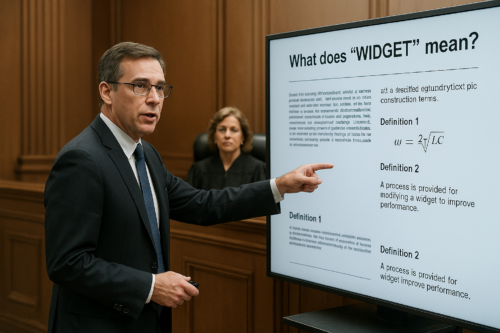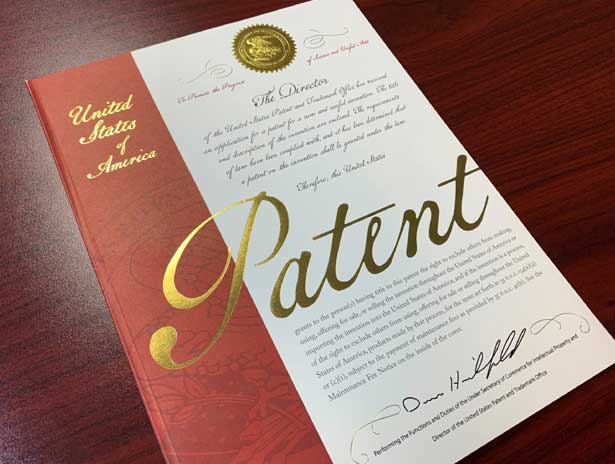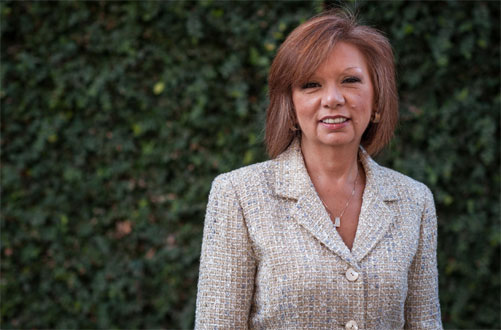
A Markman hearing, also called a claim construction hearing, is a pivotal proceeding in U.S. federal patent litigation where a judge (not a jury) determines the meaning of disputed claim terms in a patent. This interpretation shapes the scope of a patent holder’s rights and often decides the fate of a patent infringement case.
The hearings are named for the Supreme Court case Markman v. Westview Instruments, 517 U.S. 370 (1996), which mandates that claim interpretation is a question of law for the court.
The Markman hearing is a critical juncture in patent litigation where both patent holders and defendants can gain a significant procedural and substantive advantage if they approach the hearing strategically. For patent holders, the primary objective is to advocate for a broader interpretation of claim terms that encompasses the accused product or process. This often involves leveraging the patent specification and prosecution history to demonstrate how the claim language was intended to be read in light of the invention as a whole.
Patent holders should be careful not to introduce interpretations that risk indefiniteness or overreach, which could invite challenges under 35 U.S.C. §§ 112 or 101. They should also rely on the ordinary meaning of terms where appropriate and be prepared to show how a person of ordinary skill in the art would understand the claim language, potentially through expert testimony and relevant dictionary definitions. Strategically using intrinsic evidence to support a broader scope while rebutting attempts to narrow terms through extrinsic evidence is often essential to preserving the value of the asserted claims.
In contrast, defendants typically seek a narrower construction of the claim terms to avoid infringement or to set the stage for a summary judgment motion. Defendants should carefully analyze the prosecution history and any narrowing amendments or disclaimers made by the patent applicant, which can support a more limited interpretation of the claims. Highlighting ambiguities or inconsistencies between the claim language and the specification may also support arguments for non-infringement or invalidity.
Defendants should be prepared for rigorous cross examination of the patent holder’s expert witnesses, challenging their understanding of the technology and their interpretations of the claim terms. Additionally, aligning proposed claim constructions with eventual jury instructions is vital, ensuring that the jury receives a clear and legally sound framework within which to assess infringement and validity.
Both parties must also remain mindful of how the district court’s claim construction order may affect subsequent proceedings, including appeals to the Federal Circuit, and may influence concurrent proceedings, such as inter partes review before the United States Patent and Trademark Office (USPTO) or enforcement actions before the International Trade Commission.
The legal framework governing Markman hearings and patent claim construction has been shaped by several landmark judicial decisions, starting with the Supreme Court’s pivotal ruling in Markman v. Westview Instruments. In that case, the Court held unanimously that the interpretation of patent claims is a matter of law to be decided by a judge rather than a jury. The decision emphasized that because claim construction affects the scope of the patentee’s legal rights, it is properly within the purview of the court. Importantly, the Court clarified that judges must first look to intrinsic evidence, including the patent's written claims, the specification, and the prosecution history, to determine the meaning of disputed claim terms. Only if the intrinsic record does not resolve ambiguities should courts consider extrinsic evidence, such as expert testimony and technical dictionaries.
Nearly a decade later, the Federal Circuit reinforced and refined these principles in Phillips v. AWH Corp., 415 F.3d 1303 (Fed. Cir. 2005) (en banc), which is now the leading case on patent claim construction rules. In Phillips, the Federal Circuit's decision reiterated that the starting point for interpreting claim language is its ordinary meaning as understood by a person of ordinary skill in the art, in light of the patent specification. The court confirmed a strong preference for relying on intrinsic evidence, cautioning that extrinsic sources such as dictionary definitions, inventor testimony, or expert opinions should not override the context provided by the patent itself. The Phillips decision established a hierarchical approach to evaluating evidence in claim construction, placing intrinsic evidence at the top.
The standard of appellate review Markman hearing findings has also evolved. Initially, under Cybor Corp. v. FAS Technologies, Inc., 138 F.3d 1448 (Fed. Cir. 1998), the Federal Circuit reviewed all aspects of claim construction de novo, meaning it gave no deference to the trial court’s findings. This changed with the Supreme Court’s decision in Teva Pharmaceuticals USA, Inc. v. Sandoz, Inc., 574 U.S. 318 (2015), which held that while the ultimate determination of claim meaning remains a question of law, any underlying factual findings, such as a judge’s reliance on expert evidence to resolve ambiguities, must be reviewed for clear error on appeal. As a result, appellate review of claim construction now reflects a hybrid standard: legal conclusions are reviewed de novo, while factual determinations are subject to more deferential review. This nuanced approach reflects the complexity of claim interpretation in modern patent litigation.
The Markman hearing is the process of interpreting claim terms, which depends on a structured evidentiary hierarchy established by precedent. Courts divide the sources of interpretive guidance into two categories: intrinsic evidence and extrinsic evidence, with a strong preference for the former.
Intrinsic evidence is considered the most authoritative and reliable source in claim construction. It consists of three core components. First, the claim language itself is the starting point; it must be read in the context of the entire patent, not in isolation. Courts analyze each term in light of surrounding text and how it is used within the patent as a whole. Judges prefer to interpret the written claim language on its face, making the patent scope and rights more accessible to the reader.
Second, the patent specification plays a central role, as it is the written description of the invention and effectively serves as the "dictionary" of the patent, providing definitions, context, and examples of how terms should be understood. The specification may expressly define certain terms or implicitly shape their meaning through detailed descriptions of the invention’s structure and operation.
Third, the prosecution history, which is the record of communications between the patent applicant and the patent examiner during the patent application process, can further illuminate the intended scope of the claims. Amendments, arguments, and rejections captured in this history often clarify the meaning of claim language and may establish disclaimers or limitations that affect how terms are interpreted.
When intrinsic sources fail to fully resolve a dispute over the meaning of a term, courts may turn to extrinsic evidence, which serves a supportive, secondary function. This includes technical dictionaries, engineering glossaries, and treatises that reflect the common usage of terms at the time of the invention. Expert testimony is also a common form of extrinsic evidence, offered to explain how a person of ordinary skill in the art would have understood particular claim terms based on the technical context.
While extrinsic evidence can help fill gaps or confirm interpretations suggested by intrinsic materials, courts generally treat them with caution. The Federal Circuit has consistently held that extrinsic evidence cannot contradict or override the meaning evident from the intrinsic record. In deciding claim construction, Judges will typically only consult extrinsic materials if, after a thorough review of the patent claim language, specification, and prosecution history, there remains genuine ambiguity regarding a claim’s scope.
In sum, while both categories of evidence may be presented during a claim construction hearing, the court’s analysis is anchored in intrinsic materials. Extrinsic sources, including expert opinions and dictionary definitions, are used judiciously and only when necessary to clarify unresolved ambiguities. Any consulted extrinsic support must align with intrinsic record. This prioritization reinforces the importance of clear drafting during the patent prosecution process and underscores the role of the patent specification and prosecution history in defining the legal boundaries of a patent.
While the precise procedures for a Markman hearing can vary depending on the jurisdiction, most district courts follow a similar sequence of events designed to facilitate a thorough and orderly claim construction process. The hearing typically unfolds in multiple phases, starting well before the court convenes for oral argument.
Claim term identification: Each party, plaintiff and defendant, identifies specific claim terms from the patent that are disputed and require judicial interpretation. Courts generally encourage the parties to limit their selection to the most material terms to streamline the process and focus on issues likely to impact the outcome of the patent infringement case.
Selecting the right disputed claim terms is essential. Parties should focus on a limited number of key terms (e.g., 5 to 10) that are most likely to affect the outcome of the case. Overloading the court with excessive disputes can dilute persuasive focus and lead to inefficient proceedings. Strategic claim selection enhances clarity and improves the chances of a favorable construction ruling.
Initial disclosures: This step is governed by local rules that often vary by district. For example, in the Northern District of California, which has established detailed patent local rules, patentees are typically required to serve detailed disclosures within approximately 45 days of the initial case management conference. These disclosures include the asserted patent claims, identification of the accused products or systems, relevant priority dates, and other foundational information that will shape the claim construction dispute.
Claim construction briefing: Each party submits detailed written arguments in support of its proposed claim interpretations. The briefs typically cite intrinsic evidence, including the patent specification, claim language, and prosecution history, and may also include references to extrinsic evidence such as technical dictionaries or expert declarations. In many cases, both sides retain technical experts to provide opinions on how a person of ordinary skill in the art would understand the disputed terms. These expert declarations are often submitted with the briefing, and in some jurisdictions, experts may also be deposed or permitted to testify at the hearing.
Markman Hearing - Oral argument: Attorneys for both parties appear before the judge to present their arguments, answer questions, and address the opposing party’s interpretations. Notably, there is no jury present during this hearing, as claim construction is a legal issue reserved for the court. Depending on the complexity of the technology involved, the court may appoint a special master or engage a technical advisor to assist in evaluating the parties’ positions, particularly in cases involving highly specialized subject matter.
Claim construction ruling: The court will issue its claim construction in a written claim construction order. This ruling sets forth the court’s interpretation of each disputed term and explains the rationale behind each construction, citing the evidence presented and applicable legal standards. The timing of the ruling varies by case. In some instances, judges issue the order early, before substantial discovery has taken place, to help define the scope of the case and inform early motions. However, many courts prefer to hold the Markman hearing after some discovery has occurred but before trial, allowing the judge to consider a more complete evidentiary record while still providing guidance before summary judgment or trial preparation begins. In rare cases, claim construction rulings are issued during or even after trial, particularly when the meaning of terms emerges as a disputed issue during testimony.
Ultimately, the Markman process plays a foundational role in shaping the trajectory of a patent litigation matter. A favorable claim construction can lead directly to a finding of infringement or non-infringement on summary judgment, narrow the issues for trial, or drive the parties toward settlement. For both patent holders and accused infringers, mastering each step of this process, from identifying disputed terms through briefing, argument, and ruling, is essential to an effective litigation strategy.
The outcome of a Markman hearing significantly influences both summary judgment and trial. During a jury trial, the district court’s Markman hearing ruling becomes part of the legal framework for the case. The jury must evaluate infringement and validity based on the patent claim construction provided by the court, which are incorporated into the jury instructions. On appeal, the Federal Circuit applies a dual standard of review established by the Supreme Court in Teva v. Sandoz. While legal conclusions regarding claim construction are reviewed de novo, any factual findings, such as those based on expert testimony or extrinsic evidence, are reviewed for clear error. This distinction underscores the importance of developing a robust evidentiary record at the district court level.
The court's claim construction is also very often a trigger point for settlement discussions between the parties. A Markman hearing may result in patent claim construction that is favorable to one party over the other, creating an incentive to resolve the case early.

Post Grant Review (PGR) and Inter partes review (IPR) are administrative proceedings before the USPTO's Patent Trial and Appeal Board (PTAB) in which the validity of a patent can be challenged without resorting to patent litigation. They are also often used in parallel to patent litigation by defendants to potentially invalidate an asserted patent and render the plaintiff's patent infringement claims moot. These proceedings do not involve formal Markman hearings, but the interpretation of claim scope remains central to the process. The PTAB and patent office examiners routinely construe disputed terms, and their constructions can significantly influence both validity challenges and parallel litigation strategies. Although the evidentiary rules and procedures differ from federal court, parties must still develop persuasive arguments based on intrinsic evidence, often supported by expert declarations.
Business method patents and covered business method (CBM) patents was a form of PTAB proceeding that was in place in 2020 to address the unique challenges in claim construction. Business method patents are highly susceptible to invalidity under 35 U.S.C. §§ 101 and 112. Effective construction in these cases is critical to avoid characterizing the invention as an unpatentable abstract idea or as lacking sufficient written description or definiteness. PTAB often interpreted such claims narrowly to avoid triggering eligibility or enablement issues. The CBM program is no longer in place. However, business method patents can still be challenged in federal court and through IPR proceedings.
Additionally, claim construction issues in patents can arise in International Trade Commission (ITC) proceedings under Section 337, where they often proceed in parallel with district court litigation and may influence the outcome of both forums.
Markman hearings are pivotal in patent litigation. You should seek the assistance of intellectual property attorneys with thorough patent law and litigation expertise. It’s not just legal formality, it’s the key battleground where patent claim construction rules, evidence presented, and judge decisions converge to define the operational meaning of your patent rights.
If you are faced with a potential patent dispute or have other patent matters with which you need the assistance of experienced patent attorneys, contact our firm for a free consultation.
© 2025 Sierra IP Law, PC. The information provided herein does not constitute legal advice, but merely conveys general information that may be beneficial to the public, and should not be viewed as a substitute for legal consultation in a particular case.

"Mark and William are stellar in the capabilities, work ethic, character, knowledge, responsiveness, and quality of work. Hubby and I are incredibly grateful for them as they've done a phenomenal job working tirelessly over a time span of at least five years on a series of patents for hubby. Grateful that Fresno has such amazing patent attorneys! They're second to none and they never disappoint. Thank you, Mark, William, and your entire team!!"
Linda Guzman

Sierra IP Law, PC - Patents, Trademarks & Copyrights
FRESNO
7030 N. Fruit Ave.
Suite 110
Fresno, CA 93711
(559) 436-3800 | phone
BAKERSFIELD
1925 G. Street
Bakersfield, CA 93301
(661) 200-7724 | phone
SAN LUIS OBISPO
956 Walnut Street, 2nd Floor
San Luis Obispo, CA 93401
(805) 275-0943 | phone
SACRAMENTO
180 Promenade Circle, Suite 300
Sacramento, CA 95834
(916) 209-8525 | phone
MODESTO
1300 10th St., Suite F.
Modesto, CA 95345
(209) 286-0069 | phone
SANTA BARBARA
414 Olive Street
Santa Barbara, CA 93101
(805) 275-0943 | phone
SAN MATEO
1650 Borel Place, Suite 216
San Mateo, CA, CA 94402
(650) 398-1644. | phone
STOCKTON
110 N. San Joaquin St., 2nd Floor
Stockton, CA 95202
(209) 286-0069 | phone
PORTLAND
425 NW 10th Ave., Suite 200
Portland, OR 97209
(503) 343-9983 | phone
TACOMA
1201 Pacific Avenue, Suite 600
Tacoma, WA 98402
(253) 345-1545 | phone
KENNEWICK
1030 N Center Pkwy Suite N196
Kennewick, WA 99336
(509) 255-3442 | phone
2023 Sierra IP Law, PC - Patents, Trademarks & Copyrights - All Rights Reserved - Sitemap Privacy Lawyer Fresno, CA - Trademark Lawyer Modesto CA - Patent Lawyer Bakersfield, CA - Trademark Lawyer Bakersfield, CA - Patent Lawyer San Luis Obispo, CA - Trademark Lawyer San Luis Obispo, CA - Trademark Infringement Lawyer Tacoma WA - Internet Lawyer Bakersfield, CA - Trademark Lawyer Sacramento, CA - Patent Lawyer Sacramento, CA - Trademark Infringement Lawyer Sacrament CA - Patent Lawyer Tacoma WA - Intellectual Property Lawyer Tacoma WA - Trademark lawyer Tacoma WA - Portland Patent Attorney - Santa Barbara Patent Attorney - Santa Barbara Trademark Attorney